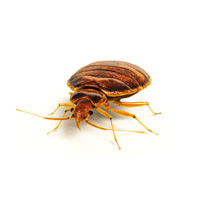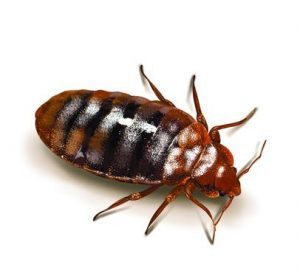Tackling Pests: What to Expect from Your Exterminator
Effective Bed Insect Therapy Solutions for Your Home
As house owners, encountering a bed insect invasion can be a traumatic experience that requires prompt and efficient action - Bed bug treatment. From determining the first indicators of an infestation to identifying the most appropriate therapy techniques, the process of eradicating bed insects demands interest to information and a critical approach. In this discussion, we will explore a variety of tested services that can assist you deal with and get rid of bed bugs from your home, providing you comfort and guaranteeing a comfortable living environment
Recognizing the Bed Pest Problem

One more indication of bed pests is the existence of dark fecal spots on bed linens, furniture, or walls. These spots are commonly little and might hemorrhage right into the material, resembling ink discolorations. Musty smells in plagued locations can additionally signify bed pests, as their scent glands emit a distinct stuffy odor.
In many cases, people may also see tiny bloodstains on sheets or jammies, resulting from mistakenly crushing bed pests while sleeping. Appropriate recognition of these key indicators is essential for determining the visibility of bed pests and starting appropriate therapy steps quickly.
Non-Chemical Treatment Techniques
Upon recognizing the visibility of bed bugs via crucial signs such as attacks, fecal areas, and musty odors, checking out non-chemical therapy techniques becomes critical in successfully dealing with the invasion. Non-chemical strategies use an alternative for people looking for eco pleasant services or those with level of sensitivities to traditional chemicals.
Among the most effective non-chemical approaches is heat therapy. Subjecting the plagued areas to heats can remove bed insects at all life phases, consisting of eggs. This approach is non-toxic and passes through right into gaps where bed bugs conceal. Another non-chemical alternative is vacuuming. Completely vacuuming ravaged surfaces, joints, and crevices can literally remove bed pests and their eggs. Remember to quickly dispose of the vacuum bag in a sealed plastic bag outside the home.
Moreover, framing mattresses, box springs, and cushions in unique bed bug-proof covers can help trap any type of bed pests inside and prevent them from feeding or leaving. Furthermore, vapor therapy can be used to eliminate bed pests on surface areas and in fabrics by revealing them to heats. Integrating these non-chemical approaches right into a detailed therapy plan can significantly enhance the performance of combating bed insect infestations.
Chemical Treatment Options
Chemical therapy options are typically utilized in the elimination of bed insects to efficiently eliminate infestations. One of the most generally made use of chemicals in bed insect treatments is pyrethroids, which function by interrupting the bed bugs' nervous system, inevitably leading to their death.
One more efficient chemical treatment is neonicotinoids, which additionally target the anxious system of bed insects but have actually shown to be extra powerful and have a longer residual result compared to pyrethroids. Desiccants, such as diatomaceous planet, are one more chemical treatment alternative. These compounds function by taking in the waxy outer layer of the bed pests, causing them to dry out and pass away.
While chemical treatments can be extremely reliable in getting rid of bed pest infestations, it is vital to comply with security standards and instructions given by professionals to reduce any possible risks to people and family pets. - exterminator DC
Laundering and Vacuuming Strategies
In enhancement to chemical treatment alternatives, effective bed bug monitoring likewise involves applying complete laundering and vacuuming approaches. Washing ravaged products in warm water and drying them over heat can help get rid of bed bugs and their eggs. It is crucial to clean and dry bedding, apparel, drapes, and any type of other fabric products that might have entered into contact with bed insects.
Vacuuming is an additional important method in combating bed pest click here now infestations. Using a vacuum with a solid suction power, extensively vacuum cleaner areas where bed bugs may hide, such as bed mattress, box springtimes, bed structures, and carpetings. Remember to throw away the vacuum cleaner bag in a secured plastic bag instantly after vacuuming to stop bed insects from getting away.
Frequently vacuuming and washing things can significantly reduce the bed bug population in your home and complement the effectiveness of chemical treatments. By including these laundering and vacuuming approaches right into your bed bug management strategy, you can boost the possibility of removing these pests from your space.

Preventing Future Infestations
To avoid future bed pest problems, complete assessment and maintenance of potential access factors and hiding spots are crucial. Beginning by sealing cracks and holes in walls, floors, and furnishings where bed insects can enter or conceal. Repair any peeling off wallpaper or loose molding that can work as harborage for these pests. In addition, think about installing door brushes up on exterior doors and fixing any type of damaged displays on windows to protect against bed insects from riding right into your home. Frequently evaluate and vacuum areas where bed pests are understood navigate to this website to conceal, such as along bed mattress joints, bed frameworks, and furnishings joints. Be alert when bringing secondhand furnishings or apparel into your home, as these things can in some cases be resources of bed bug invasions. Finally, think about using bed mattress and box springtime encasements to trap any kind of potential bed insects and stop them from infesting your sleeping location. By carrying out these preventative actions, you can protect your home against future bed pest problems.

Final Thought
Finally, efficient bed pest treatment services for your home include identifying the problem, using non-chemical and chemical therapy methods, laundering and vacuuming approaches, and carrying out safety nets. By following these actions, you can review effectively get rid of bed insects from your home and avoid future problems. It is important to deal with the problem without delay and extensively to make sure a bed bug-free living atmosphere.